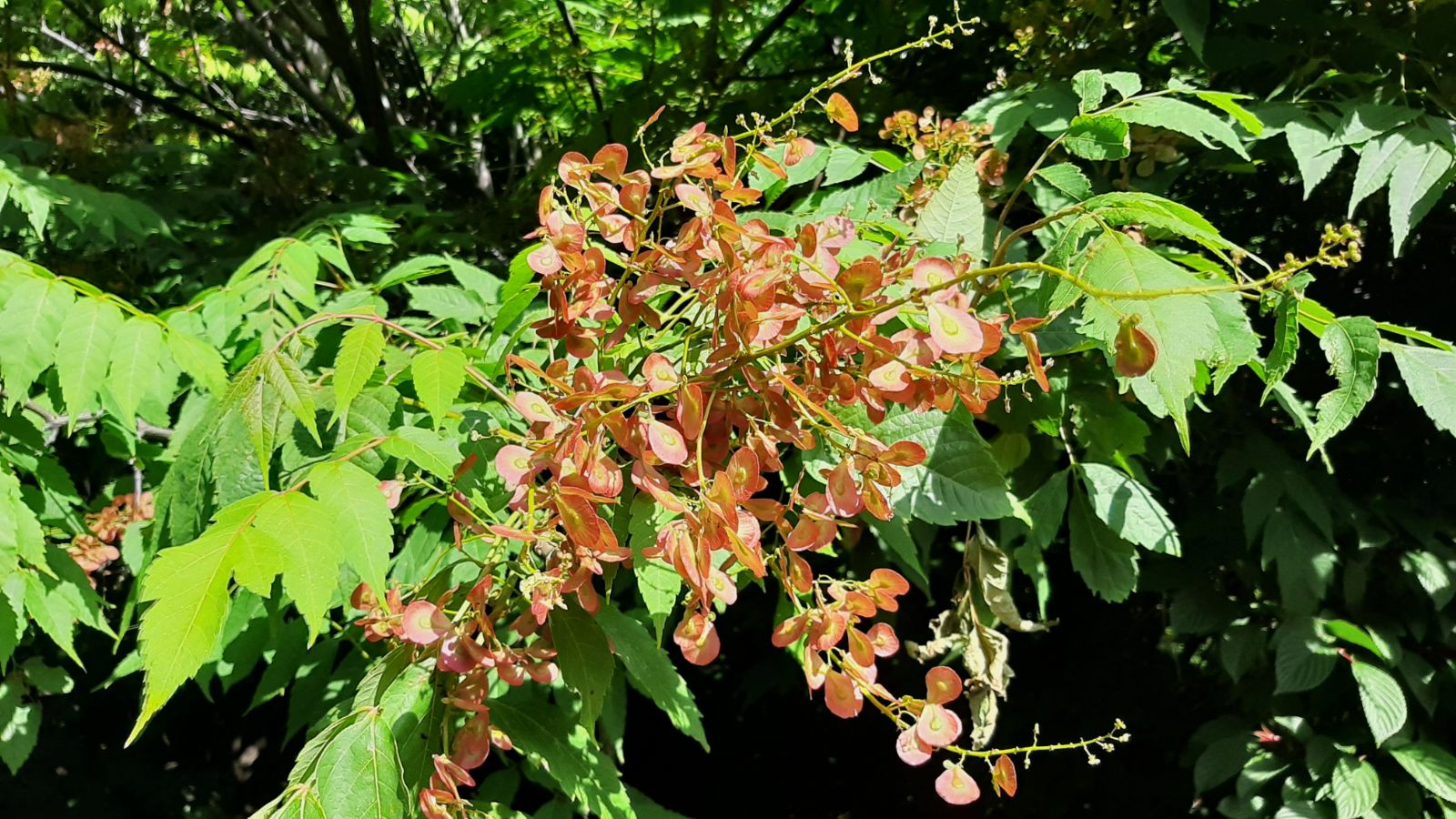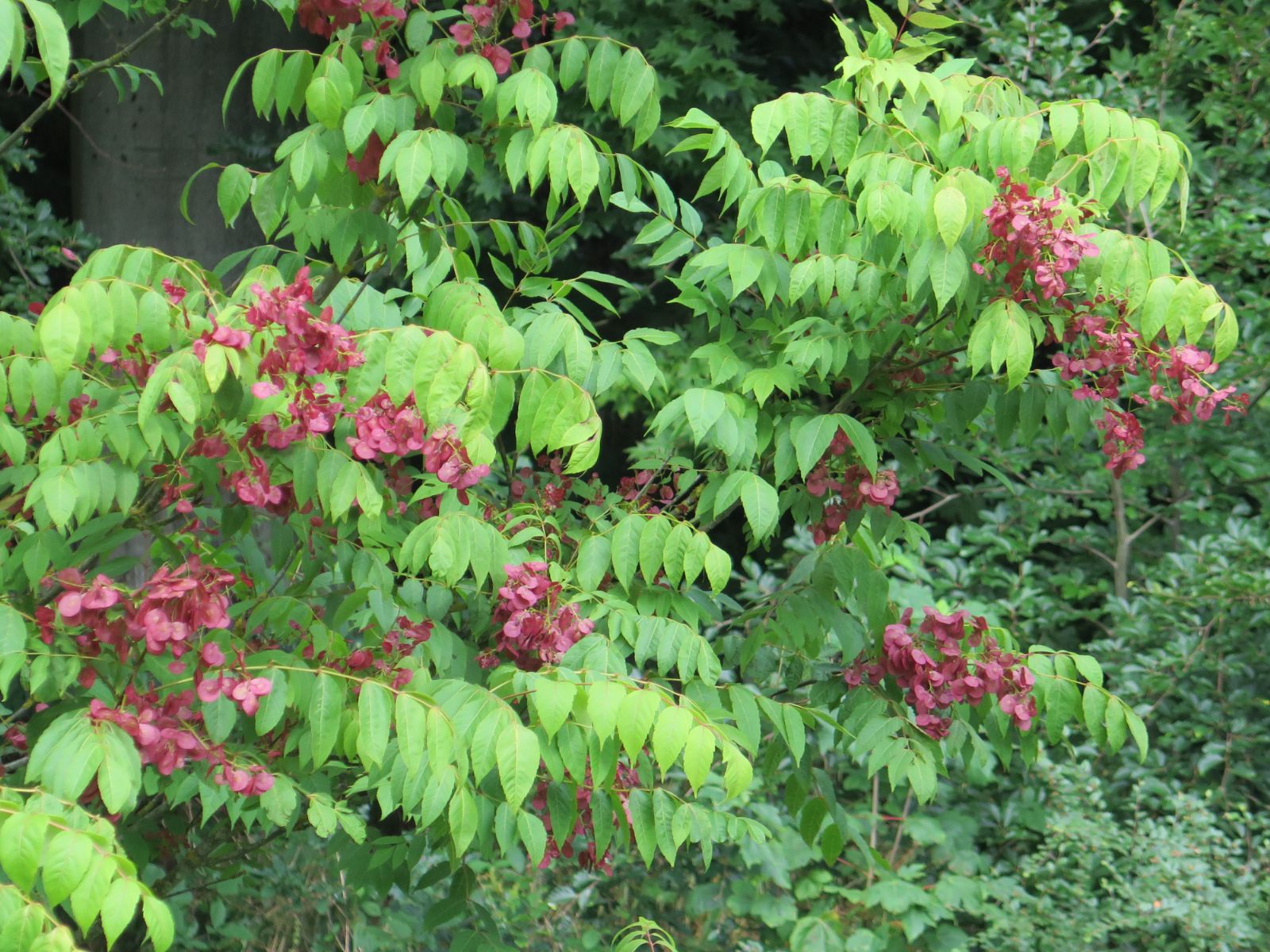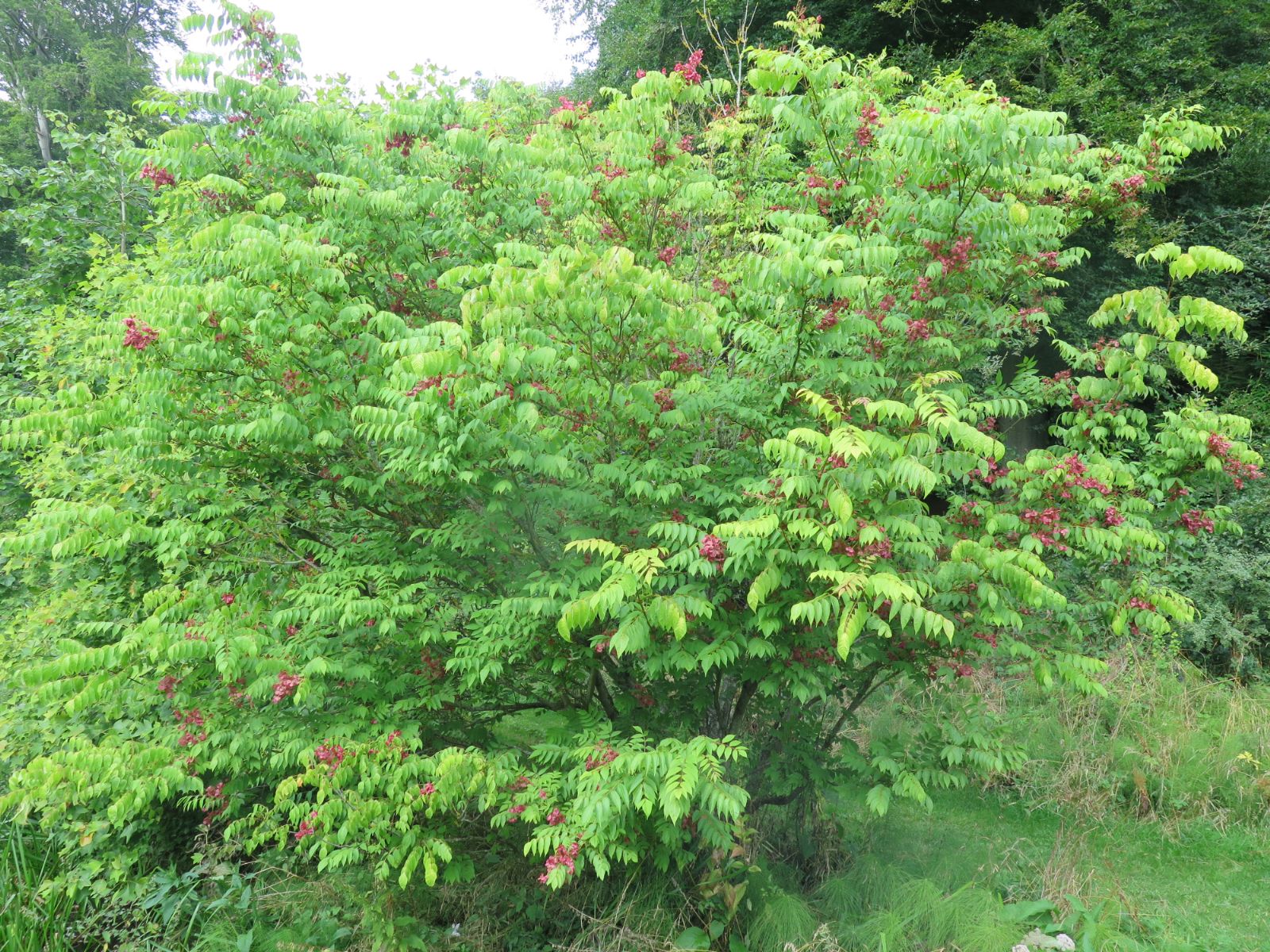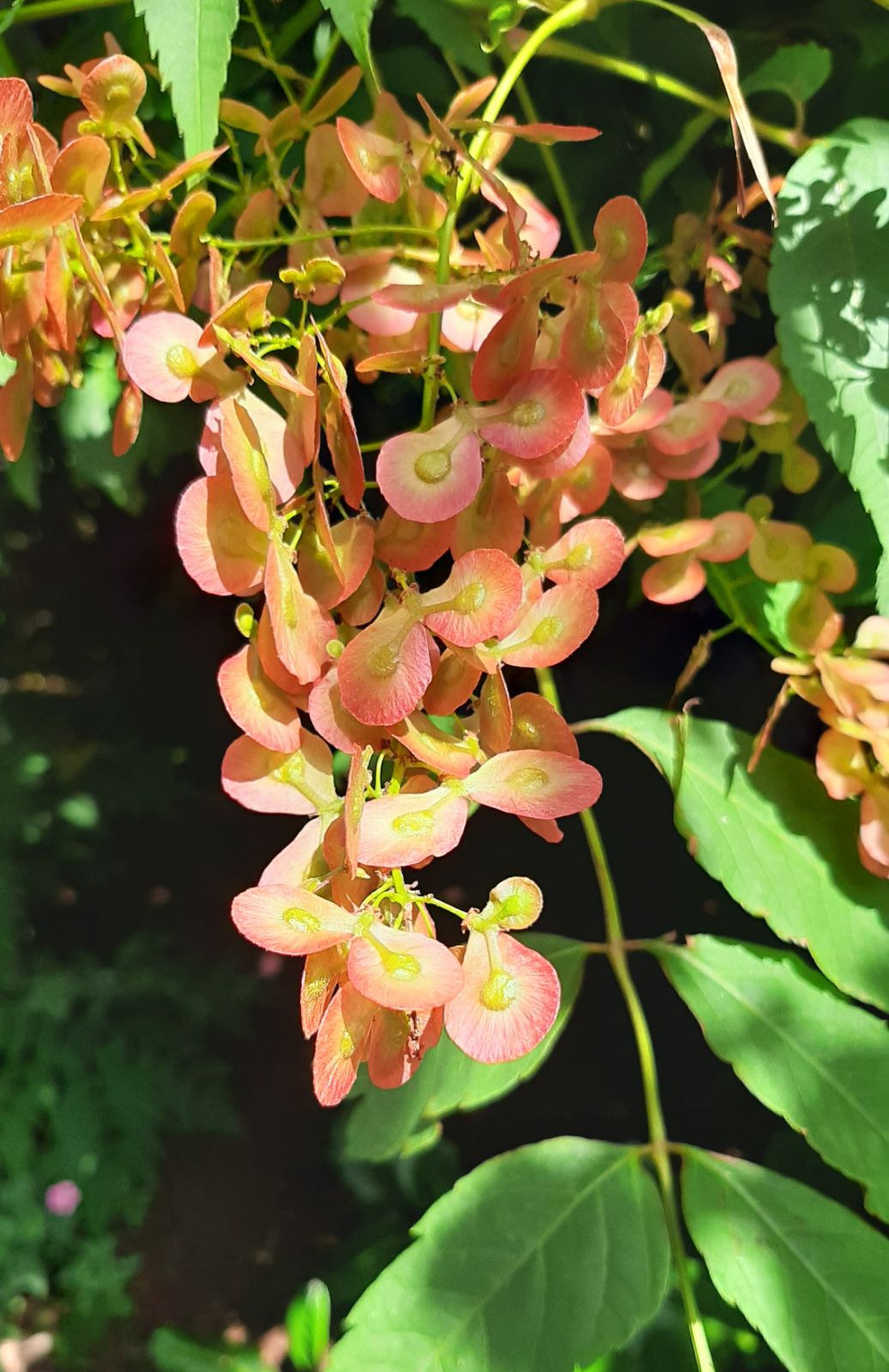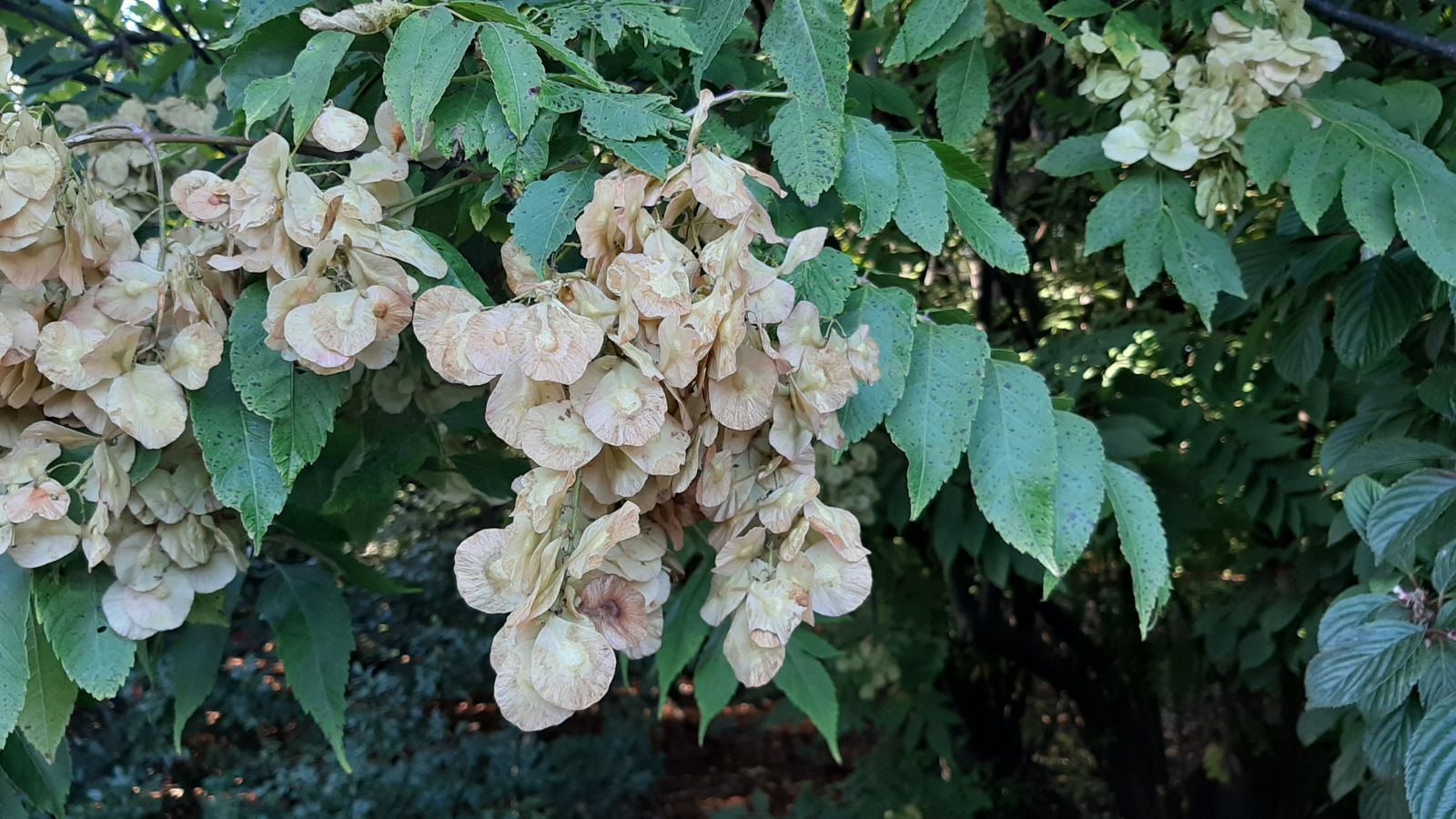Dipteronia sinensis
Credits
Article from Bean's Trees and Shrubs Hardy in the British Isles
Recommended citation
'Dipteronia sinensis' from the website Trees and Shrubs Online (treesandshrubsonline.
Genus
Other taxa in genus
A deciduous, small tree up to 30 ft high, with a trunk 6 in. or more in diameter, or sometimes merely a big bush. Leaves opposite, pinnate, 9 to 12 in. long, consisting usually of from seven to eleven leaflets, which are opposite, ovate or lanceolate, short-stalked; 11⁄2 to 4 in. long, one-third as much wide, sharply, coarsely, and irregularly toothed, covered like the twigs when young with scattered hairs; there are small tufts in the vein axils. Panicles erect, pyramidal, 6 to 12 in. long. Flowers polygamous, very small, greenish white; stamens white, six to eight, 1⁄8 in. long. Fruits produced in large clusters, each one composed of two flat, winged carpels (like the fruits of wych-elm or Ptelea), obovate, 3⁄4 to 1 in. long, soft red.
Native of Central China, at from 3,500 to 5,000 ft elevation. This interesting and handsome species was introduced by Wilson for Messrs Veitch about 1900. It is beautiful in foliage, and its fruits are very interesting; it flowered at Kew in June 1912, but the blossoms were in no way effective. It is evidently quite hardy, thriving well in good soil, and can be propagated by cuttings taken in July and put in gentle bottom heat; it also roots readily from layers.
There is an example measuring 37 × 3 ft at Hergest Croft, Heref. (1969).

